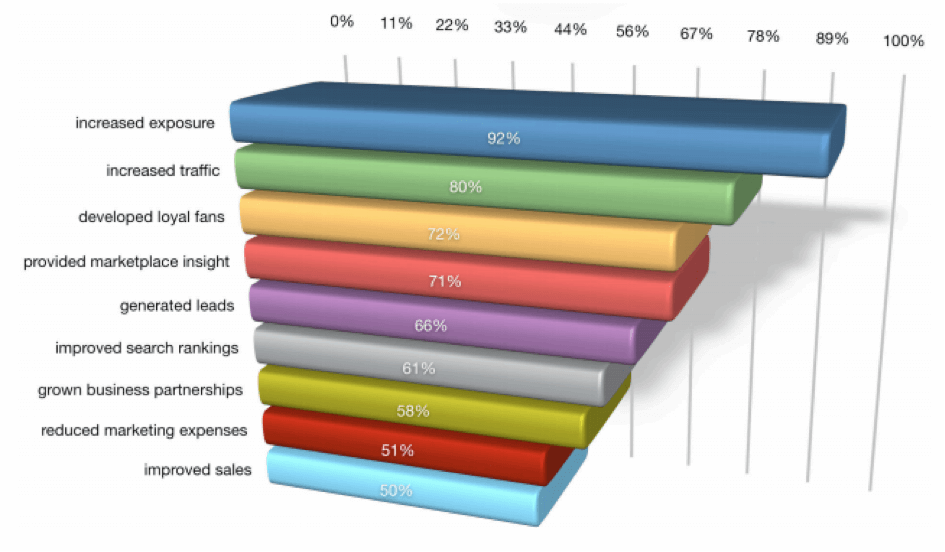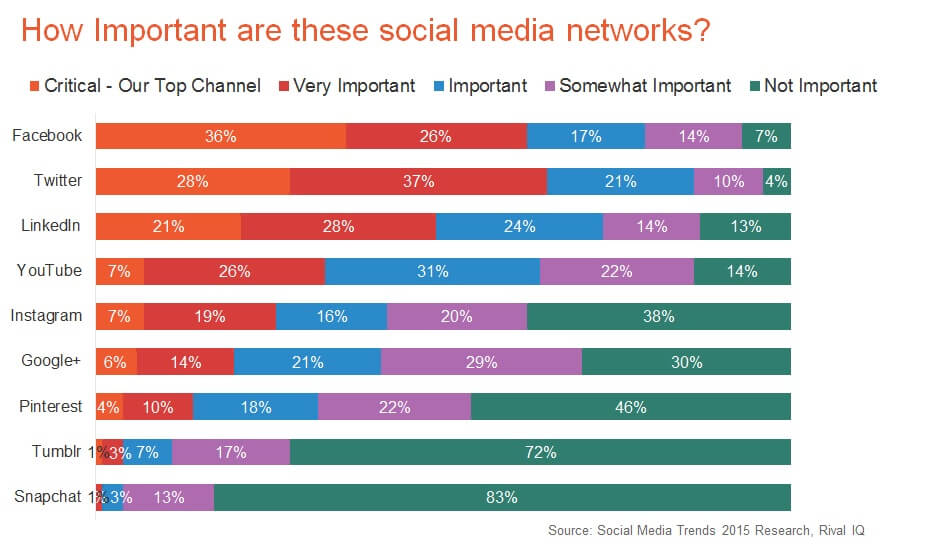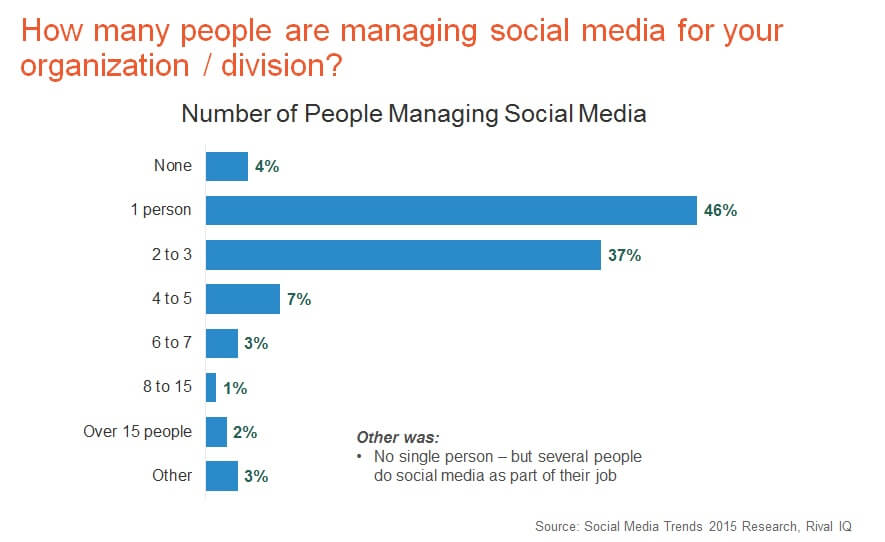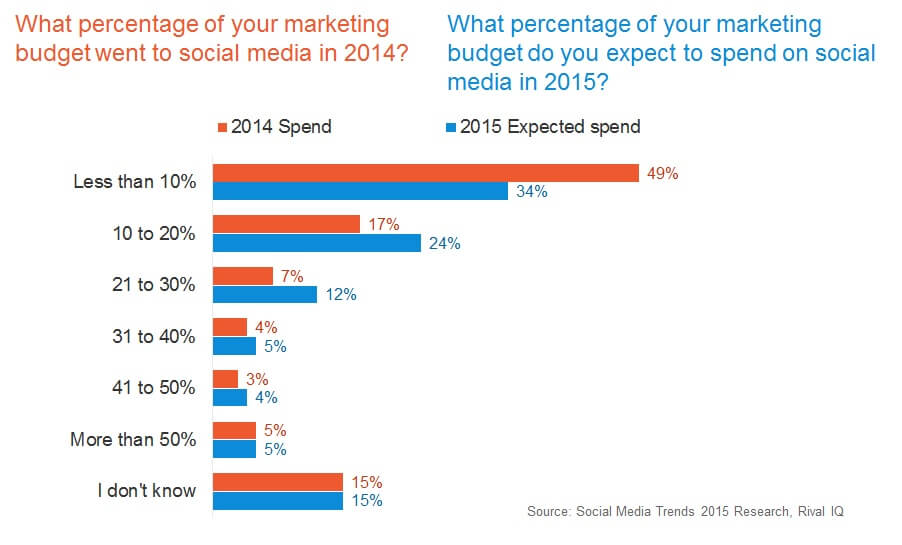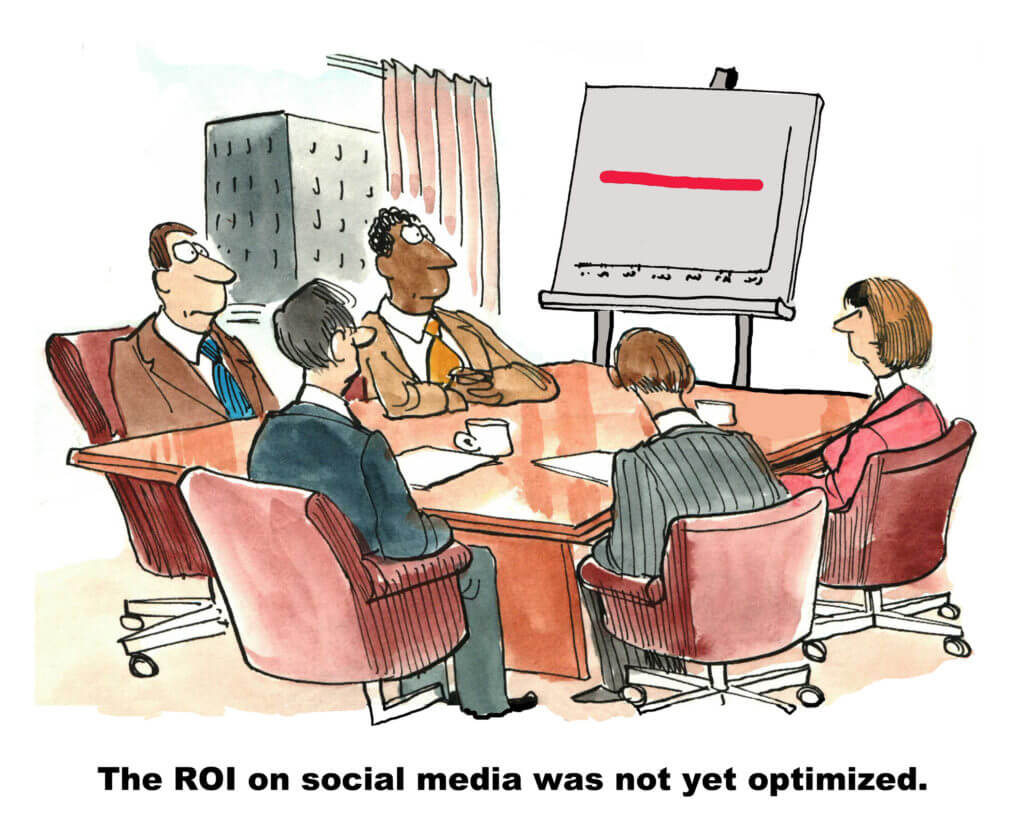Social media is as integral to today’s marketing mix as print was in the 1960’s. With the proliferation of multiple platforms, each with its unique blend of catchwords, engagement options and customer metrics, social media is also incredibly complex for marketers.
In order to make sense of the various metrics, and effectively use social media as a marketing channel, you need to quantify your efforts. But measuring a social media ROI (return on investment) is not easy. Many marketers make the mistake of simply firing up an analytics tool and reporting on whatever metrics are available, in an attempt to justify a social media presence to the CEO.
Social media analytics are critical, don’t get me wrong. But before you whip out your measuring tapes and weighing scales, take a step back. There are three areas you must tackle first before attempting to measure social media ROI. These are:
- Context
- Strategy
- Budget
Let’s look at each of these in more detail.
1. Fully Understand Your Social Context
Your first step is to look within and ask yourself some fundamental questions that will lay the foundation for how well you carry out social media marketing for your brand.
Why do you want to be on social media?
Your first step should be to understand why you are using social media. What do you hope to achieve? Is it because you think it is an easy medium to master? Or do you look at social media as a free marketing platform?
Jumping on the social media bandwagon “just because” is not the best reason to be on social media. Social media marketing requires time, effort and a deep understanding of customer behavior to achieve any level of success. A me-too approach is self-defeating and best avoided.
Social Media Examiner’s annual State of Social Media survey reported these as the top benefits of social media marketing in 2014:
What platforms should you be on?
You must understand who your users are and what platforms they are using. It also helps to know what each platform brings to the table. For example, a B2B business cannot afford to miss being on LinkedIn, while a fashion and retail business would do well on Pinterest and Instagram. Facebook, on the other hand, works across the board for most businesses, thanks to its massive reach and varied demographic profile. It’s just about understanding your customers and choosing the best social media platforms for your business.
Should you outsource social media or keep it in-house?
Few businesses can thrive without a social media presence, but the commitment requires resources. If you do not have the resources or knowledge to manage social media for your brand, hang on. Wait till you get someone dedicated to managing social media for you.
- Outsourcing social media gives you more time to focus on your core business, gives you the expertise of a social media professional or an agency and means you know what you’re paying for.
- In-house management allows for direct control over content and more uniformity in your brand’s voice. The downside is the time and the expertise required to manage in-house resources.
2. Formulate Your Social Media Strategy
Now that we’ve taken care of the basics and you have a clearer picture of how to tackle social media for your brand, it’s time to do the actual work. This needs to be a feedback loop process to make it consistently more robust and efficient.
The social media strategy for every brand is driven by three basic factors:
- Product Life Cycle: The life stage of a brand determines what the brand would like to do with its marketing – whether on social media or otherwise. A new brand might aim to create awareness and brand recognition; a traditional brand might look at increasing repeat purchases.
- Competitive Environment: A brand that operates as a monopoly has the option to do what it feels like in terms of positioning, routes to market and everything in between. The situation changes drastically when you operate in a crowded competitive market, where every move your brand makes can be challenged or imitated by competitors. Another factor that plays a huge role is where your brand stands with respect to competition. A market leader’s strategies are very different from those of the #2 brand or a laggard. (tip: You can use Rival IQ to get a handle on your competitive environment and help set your social media strategy!)
- Business Environment: Which way is the economy heading? How much demand does your product category currently have? What government policies affect your business? Each of these external factors have a say in the communication strategies brands adopt e.g. the American Red Cross swung into action on social media during Hurricane Sandy saving lives and bringing relief by monitoring millions of tweets across the affected regions and responding to them based on their levels of severity.
Based on where your brand fits in between the three axes of PLC, competition and business environment, your strategy writes itself. Social media strategies can be about achieving a variety of big-picture goals—
- Awareness building: Applicable to new brands or new product line launches. Aims to get maximum eyeballs, growing number of fans and followers and encouraging product trials.
- Maximizing conversions: This strategy works well for brands that have been in the market for a while and want to grow market share and overall revenue.
- Encouraging repeat purchases: Established brands with a large user base use this strategy to engage their audience and encourage repeat purchases.
- Loyalty building: This goal is primarily for iconic brands whose purpose is not to build awareness or grow market share; but to sustain their cult status and grow their fan following. This approach is often used by luxury brands for which repeat purchases are few, but brand loyalty can mean a huge difference to the company’s bottom line.
- Customer care: This approach is typically adopted by service brands, especially in the telecom, banking and travel sectors. Their core social media focus is to help customers troubleshoot efficiently, while brand building and customer acquisition take a backseat in relative terms.
- Disaster management: Social media has become a quick and easy crisis management platform for companies. Brands that suffer a huge PR disaster or an environmental calamity often resort to social media. An example of disaster management focused social strategy is Malaysian Airlines during their 2014 twin tragedies.
3. Draw Up Your Budget
Budgeting for social media is a key step that affects your ROI from the channel. It’s pretty straightforward actually. If you devote less than nothing towards social media, your results will be equally dismal. On the other hand, simply throwing money at social media is not guaranteed to get you great results either.
Strategy dictates budgets
Gartner Research’s survey on US Digital Marketing Spending shows about 9.3% of marketing budgets are typically allocated to purely to social media. This is over and above the budgets put aside for content development, digital advertising and analytics. We are looking at an average cost of managing a social media program for a brand at about $130,000 to $200,000 annually.
Your social media budget should be driven by your social strategy and not by industry averages. Typically, startups tend to focus on social media in their launch strategies by combining the paid and organic marketing. This is probably why the allocation towards social media marketing by startups tends to be a higher proportion of the overall budget than established national brands.
The recent Rival IQ Social Media Trends research noted an increase in social media spend from 2014 to 2015.
Fixed and variable costs
Your social media marketing will have two basic types of costs – fixed and variable.
Fixed costs on social media consists of tools and people power. These include:
- Social media experts – an agency, a freelance professional, or in-house talent – to manage your social media presence.
- Social media management tools like Hootsuite, Hubspot or Buffer, which help you schedule posts and interact with users, and analytics tools such as Rival IQ which actually measure your overall marketing efforts and display platform-specific metrics in one place.
All the other costs that you’ll incur on social media are of a variable nature. Variable costs are typically activity oriented and can go higher or lower depending on your split between organic and paid posts.
- Content creation costs
- Licensing fees for curated content
- Design and development costs for creating tailor-made social apps, graphics, header images and the like
- Advertising costs
While allocating budgets for your social media program for the year, it is a good idea to keep a floating fund on the side to tide over unforeseen emergencies. This is primarily because social media being an owned medium, you have a quicker go-to-market time on this platform as compared to say television or print advertising.
Emergencies could include a sudden entry of a new competitor that affects your market share adversely, forcing you to step up your paid advertising, a PR disaster that needs you to go into damage control mode, or even a regulatory issue that creates problems for your brand.
Over to You
Now, you’re ready to start monitoring the actual metrics that you can tie unambiguously to your business goals and that you can explicitly translate into ROI. Does the above process make sense to you? Do you have any additional tips or pitfalls I’ve overlooked here? Look forward to a discussion!

